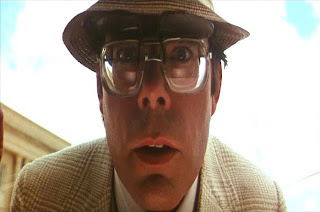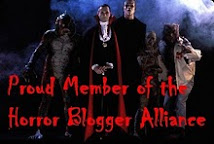Sir Christopher Lee
Who is Christopher Lee?Born on May 27 of 1922, Christopher Lee has been acting ever since a young age when he played Rumpelstiltskin while attending school in Switzerland. The son of a soldier and a beautiful Countess, Lee grew into a 6'5 frame by the time he joined the Finnish forces for World War II. Though he never made it in to battle during the war, he was active in intelligence duties throughout the war and left the Royal Air Force as a Flight Lieutenant. After the war he expressed interest in acting once again, and began appearing in films in 1947.
Since he became a horror star in the late 1950s, Lee has been involved in many other pursuits in his personal life. He married a model, Brigit Kroencke, in 1961, and the couple have remained married for the last 50 years. Off screen, Lee has made music, written books, and kept a library of over 12,000 books, many on the occult. He was listed in the Guinness Book of World Records as the person to appear in the most film roles, and was knighted by the British Government in 2009.
Lee is best known for....
His work with Hammer Films, particularly as Count Dracula. Lee, along with his friend Peter Cushing (who would have made this list if I had 11-13 spots), was the face of Hammer for part of three decades. Images of him as iconic characters - Dracula, The Monster, The Mummy, and more - have become iconic in their own right, and debates about whether he or Bela Lugosi (who also just barely missed the list) best represent Dracula still rage on.
Other Horror Hits....
I've mentioned Lee's famous monster turns, but his career has offered plenty of horror hits. I've long talked about my favorite Lee performance in Hammer's occult chiller The Devil Rides Out, which allows him to be the hero instead of the monster for once. And his most famous horror film is probably 1973's The Wicker Man, which has received a boost in popularity since Neil LaBute's pathetic remake. Lee's horror credits, particularly in the 1960s and 1970s were varied, including a couple of films with great director Freddie Francis - The Creeping Flesh still charms me - and other favorites of mine like The City of the Dead and Horror Express.
Lee tried to get away from horror in the late '70s - joking on an episode of Saturday Night Live that he didn't "think that very good ones are being produced anymore" - and notably turned down the lead in John Carpenter's Halloween, but he did return for several more horror films in his late career. The most notable of these is certainly Sleepy Hollow, where he played a small role, and the most infamous is probably Howling II: Your Sister is a Werewolf. Of course, Lee is most known to modern audiences for non-horror roles, after he appeared in the Lord of the Rings films and the last two Star Wars prequels.
So, why's Christopher Lee here?
It's really hard for me to come up with something to say about just how awesome Christopher Lee is right now. The biggest problem, I think, is that I've written about Christopher Lee about a thousand times on this blog already.
I suppose the fact that I keep bringing the dude back up is one sign that he's among my favorite people in horror, but I don't think I can say it enough. Though he was famous in his time for playing monsters and villains, every time I see Christopher Lee I feel like he's my third Grandpa or something. His presence is soothing to me, which is a bit ridiculous when I stop to think about it.
As I mentioned above, the sheer number of films that Lee has appeared in pretty much guarantees that his work has covered the whole spectrum of cinema. And I find it absolutely fascinating that a well-read, scholarly gentleman who is active in politics and loves music is generally remembered for being a monster. He didn't even want to be in half the Dracula films he was in, but he did it anyway. And he did it so well that people are still yammering about it. How cool is that?
Like Vincent Price did around the same time, Lee had a legitimate beef with the direction horror was headed in the '60s and early'70s. Though Hammer's sequels were still generally cranked out by talented directors - Francis' work on Dracula Has Risen From The Grave has some of my favorite Hammer scenes - the scripts behind these films were generally simple and offered little excitement for an actor like Lee. One rumor about the first sequel - Dracula: Prince of Darkness - states that Lee chose to have no lines in the film because he found the scripted dialogue unacceptable. It should be noted that this film was my first experience with Lee as Dracula - and I would have never guessed of Lee's displeasure until I read this story later. Lee always brought his best, even when the films around him didn't.
It's this commitment to his trade - which he must have felt was a benefit to those working around him, that makes me admire Lee even more than I do when I see his commanding presence on screen. While his image is worth plenty of praise, taking the time to look at the complex man who represented horror so well is what makes him a true hero in my eyes. I'm honored to be able to pay tribute to him, and I'm sure this won't be the last time I stumble through an attempt to tell you all how great I think Christopher Lee is. He is what I love about horror.
And he can sing awesomely too!





























































